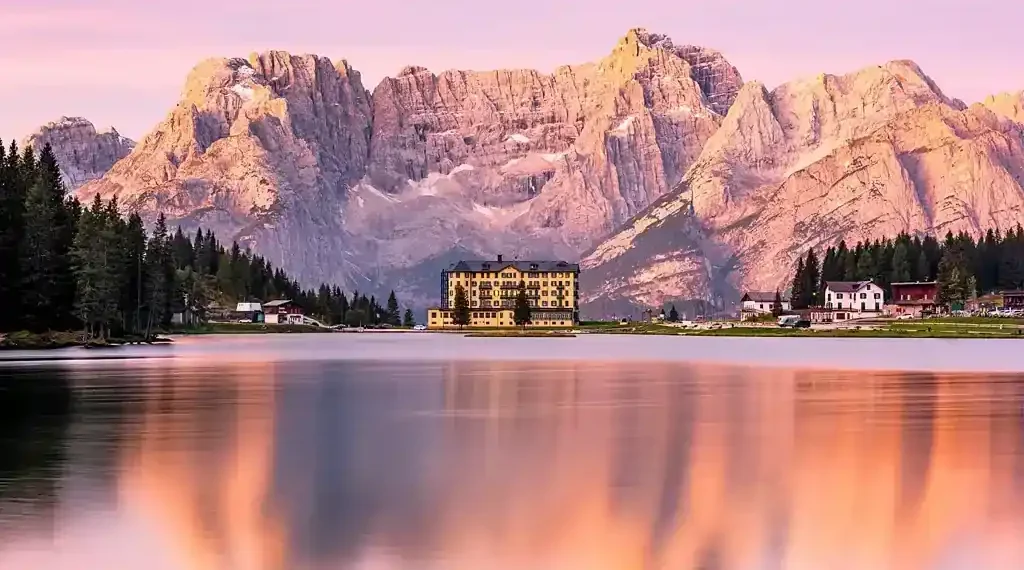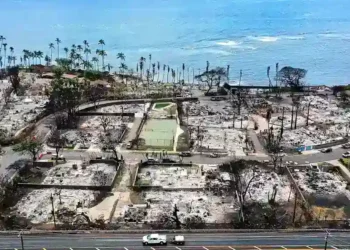Dolomites’ Split Personality Reflects History, Culture, and Tourism Pressures
The Dolomites, spanning northern Italy and bordering Austria, are a unique Alpine region where Italian, Austrian, and Ladin cultures intersect. Rich in history, including World War I battlefields and mountaineering heritage, the area now faces challenges from rising visitor numbers and environmental pressures.
Historical Layers in the Dolomites
The Tre Cime di Lavaredo, or Drei Zinnen, rise dramatically above the Dolomites, where the history of conflict and exploration is carved into the rocks. Along a clifftop path from Rifugio Auronzo stands the Maria Ausiliatrice Madonna della Croda Church, built in 1917, and nearby, a monument to Italian soldiers of World War I. A smaller memorial honors Austrian mountaineer Paul Grohmann, who first ascended Cima Grande in the 19th century, highlighting the region’s dual heritage.
Once part of the Austro-Hungarian Empire for over 550 years, the territories now known as Trentino-Alto Adige/South Tyrol, Belluno in Veneto, and part of Friuli-Venezia Giulia were transferred to Italy after World War I. Today, the Dolomites retain a “split personality,” blending Italian and Austrian cultural influences alongside the Ladin ethnolinguistic group, whose Rhaeto-Romance language dates back centuries.
Agustina Lagos Marmol, founder of tour operator Dolomite Mountains, notes: “Our mountains have a split personality. Three languages have equal status under the region’s Autonomy Statute of 1972, and everyday life reflects overlapping influences from architecture to cuisine.” Local dishes, she explains, merge Italian flair, Tyrolean heartiness, and Ladin traditions, distinguishing the Dolomites from Austria’s more uniform Alpine fare.
Hiking and Community in the Dolomites
Hiking in the Dolomites is both a physical and cultural experience. At Refugio Lavaredo, hikers of all ages and nationalities share food, wine, and conversation around long communal tables, reflecting a spirit of togetherness distinct from quieter Alpine refuges elsewhere.
For those seeking adventure and history, the region features the highest concentration of via ferrata, or high-altitude climbing routes with steel cables and ladders. Originally built during World War I to move Italian troops, explosives, and supplies across treacherous terrain, these routes now provide recreational challenges while preserving historical memory.
“Our via ferrata are defining elements of the Dolomites,” says Lagos Marmol. “They blend culture, history, and adventure, offering a way to experience nature and honor the past simultaneously.” Trails such as Torre di Toblin, Severino Casara, and De Luca-Innerkofler attract climbers seeking both scenic views and a tangible connection to history.
Open-Air Museums and Living History
Beyond adventure trails, the Dolomites offer numerous historical sites. The Anderter Alpe Open Air Museum on Croda Rossa showcases preserved military fortifications, cableways, and cannon bunkers from World War I. Nearby, the Monte Piana Open Air Museum recounts battles between Austrian and Italian forces, where thousands of soldiers perished. The Sorgenti War Cemetery in Toblach marks the final resting place of some 14,000 soldiers, a solemn reminder of the region’s turbulent past.
These sites serve as educational and memorial spaces, bridging natural beauty with historical reflection. Visitors gain insight into both the human and environmental challenges faced in these high-altitude frontlines.
Tourism Pressures and Management
While the Dolomites’ landscapes and history draw millions, rising visitor numbers have brought congestion and environmental strain. The Tre Cime di Lavaredo sees up to 14,000 daily visitors during summer, contributing to crowded trails, packed roads, and pressure on local infrastructure. South Tyrol reported around 37 million overnight stays in 2024.
Authorities have introduced measures to manage overtourism. Access to Tre Cime by vehicle now requires pre-booking and a timed entry fee (€40), while popular sites like Lago di Braies enforce parking reservations or shuttle bus usage. Curti Covi, sustainability manager for the 3 Zinnen Dolomites region, explained: “Before, the Tre Cime access road was chaotic. Registration and caps are helping, but additional measures are needed at other hotspots.”
These regulations are part of broader sustainability efforts to preserve the region’s natural and cultural integrity, ensuring that tourism does not overwhelm local communities.
Preserving Identity and Autonomy
Maintaining local control is a central priority for South Tyrol and Ladin communities. Family-owned businesses dominate the valleys, with little inclination to sell to external investors. Covi emphasized, “Our valleys are filled with small, tight-knit communities with an instinct to survive and thrive in our own way. Remaining independent and preserving our identity is the biggest challenge.”
This dedication to local governance reinforces both cultural continuity and environmental stewardship, creating a model for sustainable tourism in high-demand Alpine regions.
The Dolomites Today
The Dolomites represent a unique convergence of natural beauty, layered history, and cultural complexity. Visitors can explore World War I battlefields, via ferrata climbing routes, and living-history museums, while enjoying culinary traditions and communal alpine hospitality.
Yet the region’s dual identity—Italian, Austrian, and Ladin—also illustrates the delicate balance between preserving heritage and adapting to modern tourism demands. By integrating historical awareness, sustainability, and local autonomy, the Dolomites continue to captivate hikers, climbers, and history enthusiasts alike, offering lessons in coexistence, stewardship, and cultural respect.
This article was rewritten by JournosNews.com based on verified reporting from trusted sources. The content has been independently reviewed, fact-checked, and edited for accuracy, neutrality, tone, and global readability in accordance with Google News and AdSense standards.
All opinions, quotes, or statements from contributors, experts, or sourced organizations do not necessarily reflect the views of JournosNews.com. JournosNews.com maintains full editorial independence from any external funders, sponsors, or organizations.
Stay informed with JournosNews.com — your trusted source for verified global reporting and in-depth analysis. Follow us on Google News, BlueSky, and X for real-time updates.










